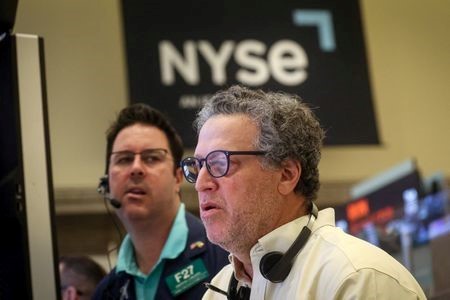




Policy Rate Updates: Double cut finale
 DOWNLOAD
DOWNLOAD

Monthly Economic Update: One for the road
 DOWNLOAD
DOWNLOAD

Inflation Update: Still low, still slow
 DOWNLOAD
DOWNLOAD


US stock investors count on earnings to propel rally after upbeat CPI report

NEW YORK, July 12 (Reuters) – As U.S. inflation cools and growth remains resilient, bullish investors are counting on the upcoming earnings season to provide more fuel for a rally that has taken stocks to their highest levels in months.
Wednesday’s closely-watched inflation report showed consumer prices increasing in June at their slowest annual pace since March 2021, stoking hopes that the Federal Reserve will soon end its monetary policy tightening.
Combined with a resilient labor market, the benign inflation data bolsters the hopes of those betting the economy is facing a so-called Goldilocks scenario of cooling inflation and steady growth that is seen as a positive backdrop for the rally in stocks. The S&P 500 is up 16.5% year-to-date and stands at its highest level since April 2022.
That optimism could be tested in the coming days as second-quarter earnings get underway. The rally has stretched the S&P 500’s valuations far above historic levels, raising the stakes for companies to report solid results in order to justify their share prices.
“The market is going to be really earnings sensitive here throughout the next few weeks,” said Chuck Carlson, chief executive officer at Horizon Investment Services. “You’re seeing higher valuations. With that rally, I think there has been an increase in expectations.”
The S&P 500 trades at a forward price-to-earnings ratio of 19.2 times compared to its long-term average of 15.6, according to Refinitiv Datastream.
Reports heat up on Friday, including results from several major banks and UnitedHealth Group (UNH). Second-quarter earnings are expected to have dropped 6.4% from the year-ago period, according to Refinitiv data.
Stocks extended their year-to-date rally following the CPI report, with the S&P 500 last up 0.8% in afternoon trading. Treasury yields, which move inversely to bond prices, fell after the cooler CPI number fanned hopes that the Fed was done hiking rates.
“It is very clear that the back of inflation is broken and it’s now showing up in the data,” said Jamie Cox, managing partner at Harris Financial Group. “Markets are starting to come around to the conclusion that the rate hikes are behind us.”
Nevertheless, some investors are still keeping a wary eye on Treasury yields. Wednesday’s fall comes after a steady rise in yields in recent weeks, including a 60 basis point rise for the U.S. 10-year yield since early April.
The recent rise, however, largely stems from an improving economic outlook. That environment should also benefit stocks – as long as it’s validated by stronger corporate outlooks, investors said.
If company guidance is strong, “then you could see the stock market continue higher,” said King Lip, chief strategist at Baker Avenue Wealth Management.
“On the other hand, if the guidance and earnings growth outlook is less robust than the increase in rates, then you are probably, at least in the short term, topping out in stocks.”
Lip has been adding positions in transportation stocks, which he expects to benefit following upbeat economic data. He has pared back some large-cap tech holdings amid rising valuations.
To be sure, some investors believe the fallout from the Fed’s 500 basis points rate hikes since early last year has yet to be fully felt in the economy, and a downturn could still be in the cards.
Bryant VanCronkhite, senior equity portfolio manager at Allspring Global Investments, has been cautious on stocks that rely on economic growth, choosing to be overweight some defensive areas of the market, such as consumer staples.
“As we start to see companies’ reports, we will begin to get true data and evidence around which one of those camps is correct,” he said.
(Reporting by Lewis Krauskopf; additional reporting by Shristi Achar in Bengaluru; Editing by Ira Iosebashvili and Aurora Ellis)
This article originally appeared on reuters.com





 By Reuters
By Reuters